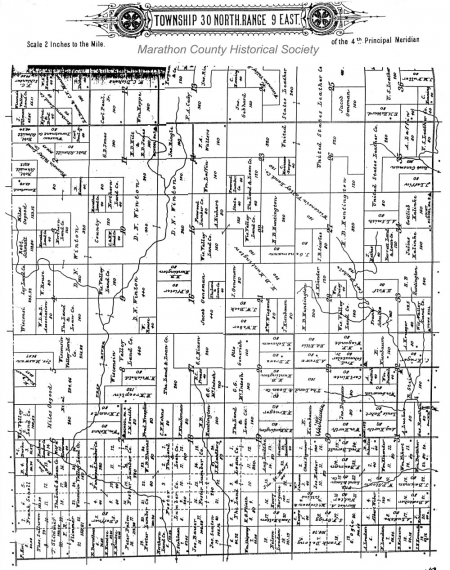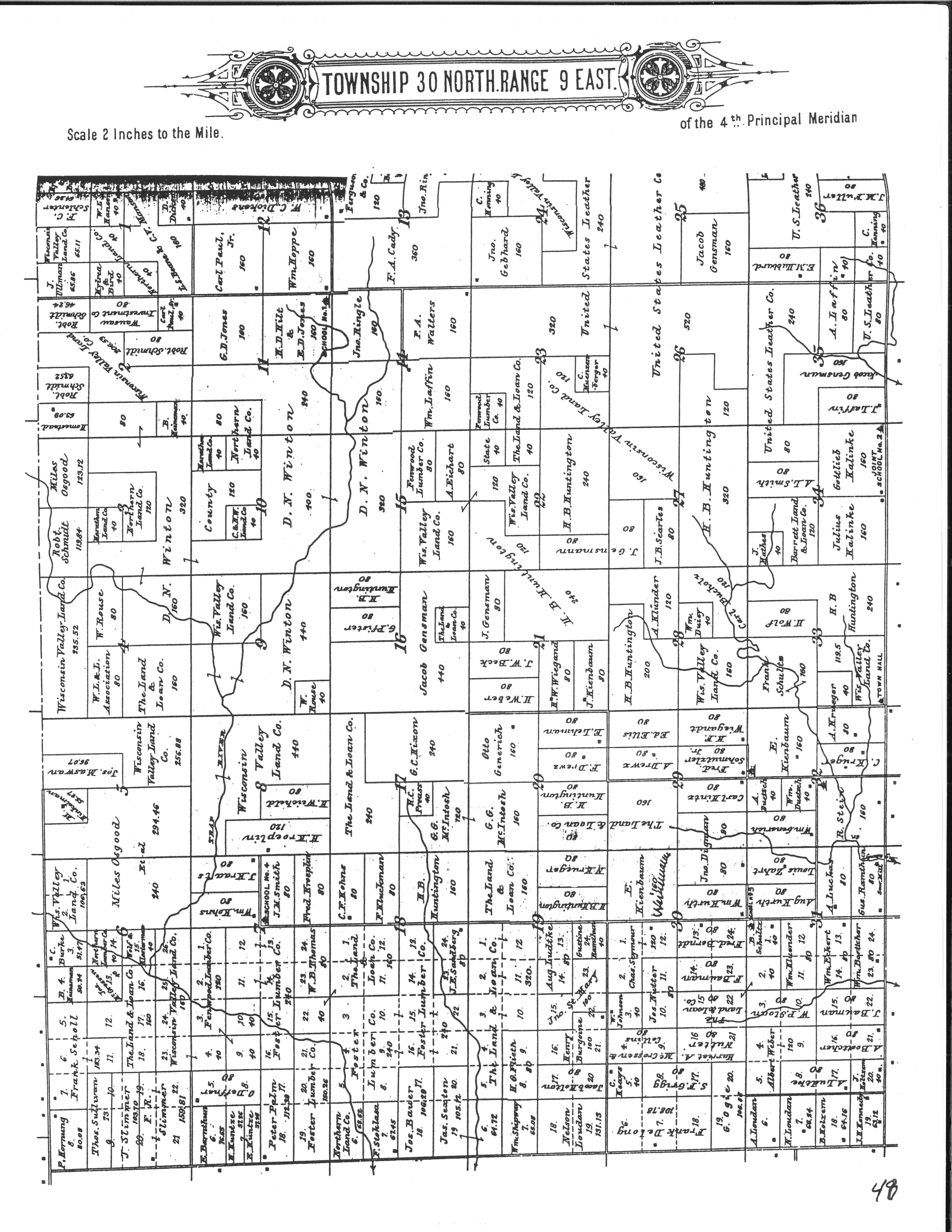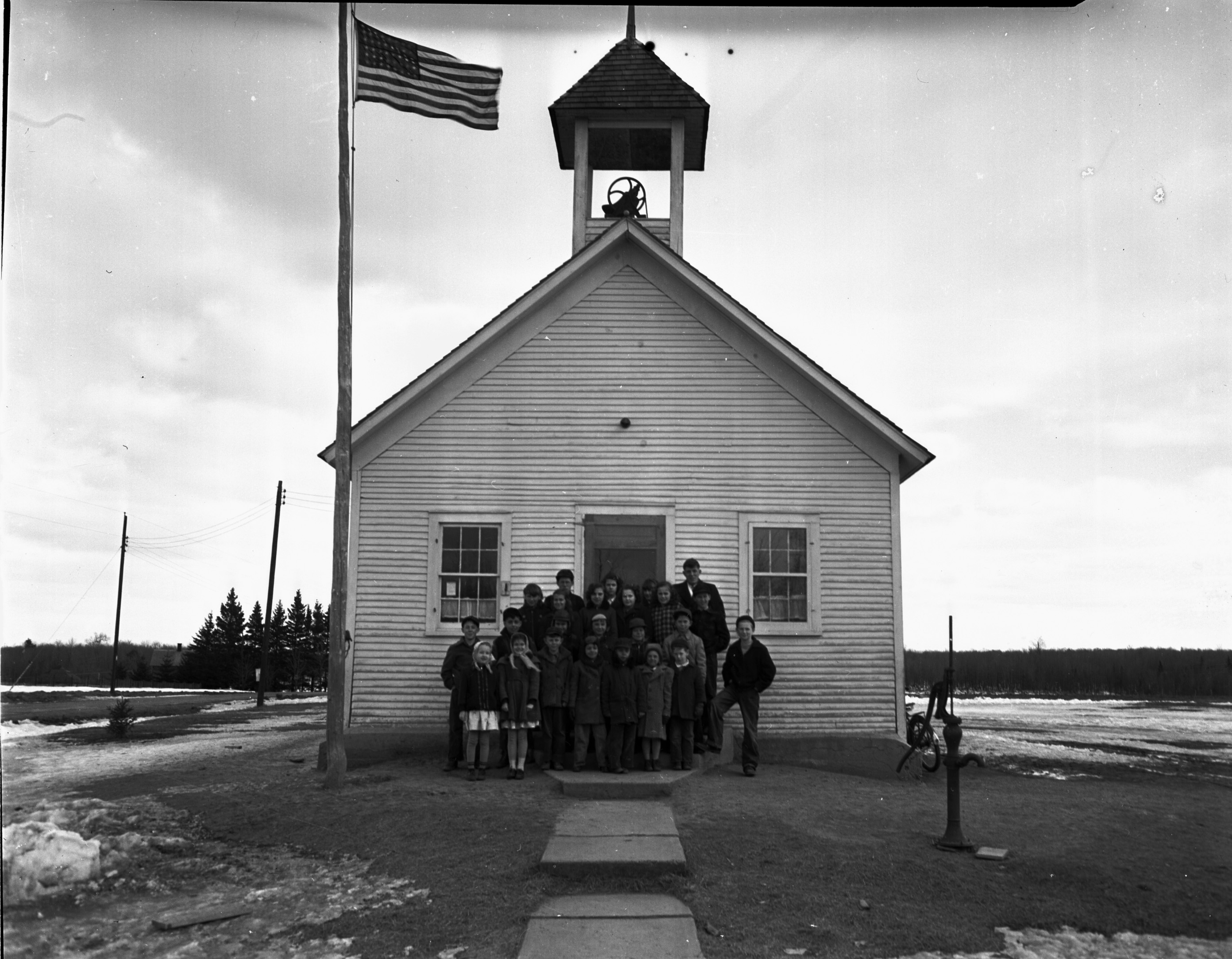Search our Places Database
Hewitt, Township of
Return To List of Locations | Back to Search
For more information on this location, please contact our research library.

Author:
Mary Moltzan
Location:
T. 30 N. - R. 9 E.
Formallized:
1894
Background:
Population: 1905-316, 2000-545
The Town of Hewitt's area was part of several different large townships in the very early years. It became part of the Town of Texas on April 30, 1860 and then split between the townships of Texas and Harrison until 1894 when Hewitt became an individual township. It was named after Wm. F. Hewitt, a farmer south of Rothschild who was also chairman of the county board at the time this township was formed.
A settlement in Hewitt, Glandon, was first known as Algonac landing, named for the hometown of Hiram Stewart and William Landon of the Barker and Stewart Lumber Company. The new name of Glandon was created by Stewart by adding a "G" to Landon at the birth of Landon's son George.
The plentiful timber in the area brought people in to harvest the lumber. Soon Glandon had a post office, two general stores, blacksmith shops, a dance hall and a cheese factory. A spur of the Milwaukee Road Railway came down from Merrill to carry the lumber to the Barker & Stewart Lumber Company in Wausau. By the middle of the 1920s, Glandon saw the end of the timber business and also the end of Glandon as the residents knew it. The last logs left in 1927, the post office closed, the last train left in 1934, and pulpwood ended in the 1930s.
Another settlement which developed was Kalinke located in Sec. 34. In 1905 a parcel of land was purchased from Gottlieb Kalinke. A saloon was built on this property. In 1914 it was purchased by Hugo and Eliza Stolze. They later added a grocery store which supplied the surrounding logging camps with groceries. The railway also came to Kalinke and continued to pick up logs and pulp even after the logging business slowed down.
In many parts of Marathon County, as was the case in Hewitt, land was harvested of lumber and then cleared for farming. German people were the most prominent to settle here first. In 1913, the township grew with many Swedish and Hungarian families coming from Chicago.
First Public Official:
Henry McLean
Post Office Established:
December 21, 1908
First Postmaster:
William C. Landon
About The Post Office:
The Glandon P. O., located SW 1/4 Section 10, was the only P.O. ever in Hewitt Township. The general store building was also used for a post office in the early 1900s.
The post office was discontinued on December 31, 1926 with service from Wausau.
Railroad:
The Chicago, Milwaukee, and St. Paul Railroad ran into the Town of Hewitt from Merrill. Algonac, better known as Glandon, was the first railroad shipping station's name. There were three log landings in Glandon. The train picked up logs and pulp which was its main purpose in coming to the area.
As the years went by and the logging business slowed, the settlers cleared the land and made it into farms. So as the timber grew scarce and farming provided a means of living, the railroad moved out of Glandon in 1934.
Going to Wausau by means of the Milwaukee Road train was an all day trip, and if you missed the change at Merrill, you stayed over until the next day.
Churches:
St. Petri's Evangelical Lutheran Church - probably the first church in Hewitt built c1906 in Section 31
Trinity Lutheran Church - built in 1917
Schools:
1. District #1, Glandon School, Section 11
2. District #2, Edgewood School
3. District #3, Pershing School, Section 3
4. District #4, Trapp River School, Section 7
5. District #5, Mc Mynn School, Section 20
Business:
General stores - one operated by John Horgan
Sunrise Tavern and Dance Hall was built in about 1900 by August Ramthum on land he had purchased from Gottlieg Kluckman. He operated it for about three years until 1903 when he sold it to Charley Seymour.
See Background
Industry:
Lumbering
Sawmill
Union Tanning Company
Star Creamery - organized in 1900 and later remodeled to make it a cheese factory
Glandon Dairy Co. - organized in 1919 as a co-op to build a cheese factory
Stories:
In 1926, there were no paved roads east of Wausau, and a rural mail carrier was required to own a team of horses, buggy and sleigh for use in the winter and spring months. A carrier also used a snowmobile attachment on a Model T and Model A Ford. These were the forerunners of the present day snowmobiles.



